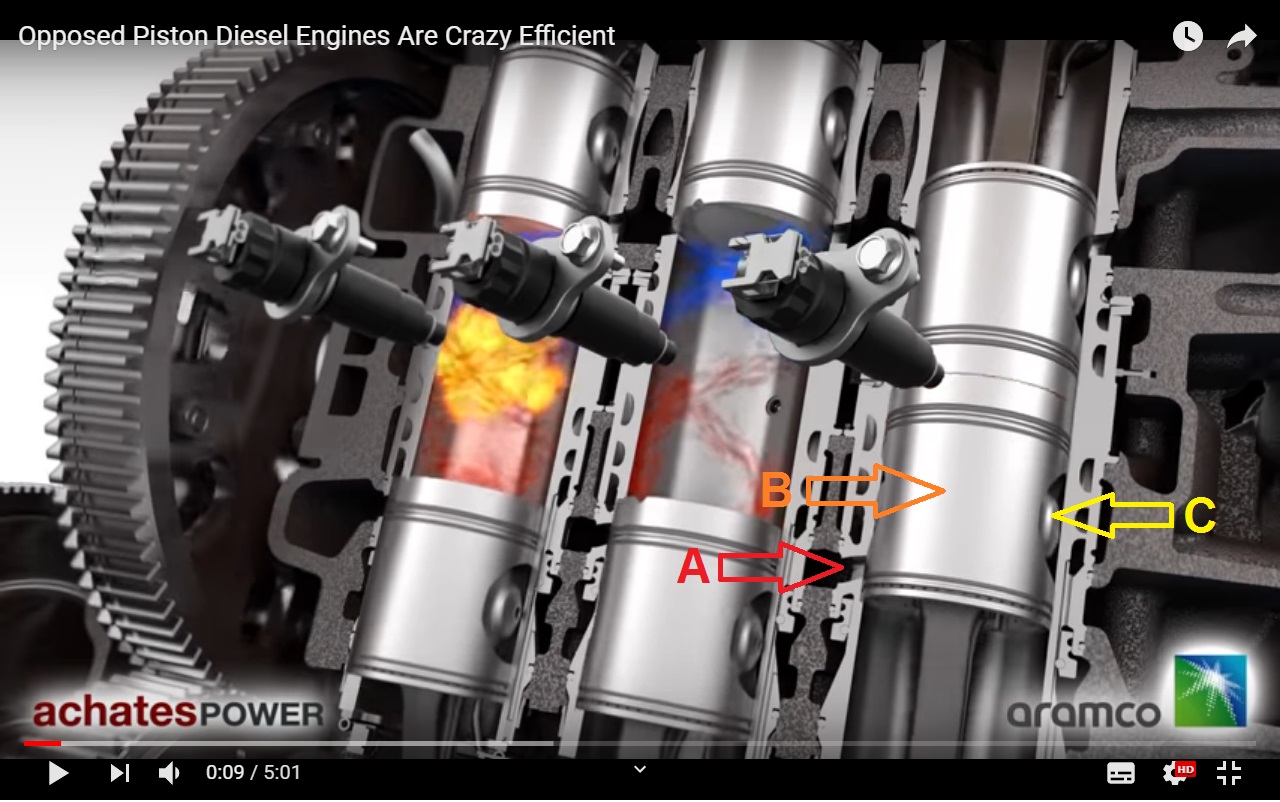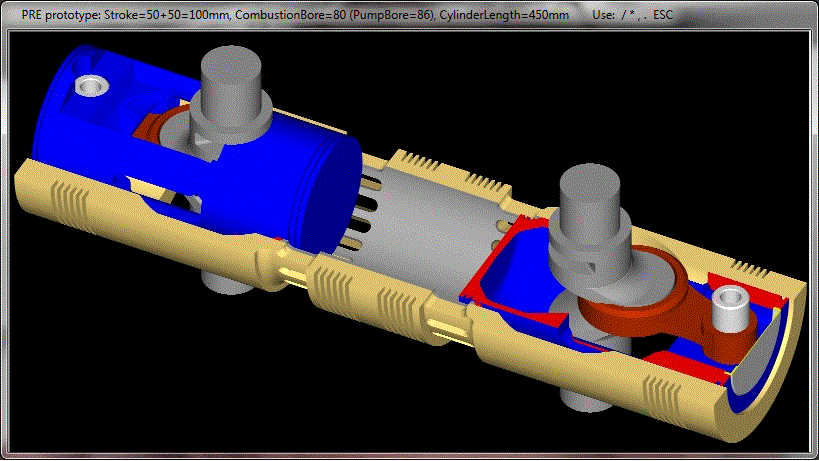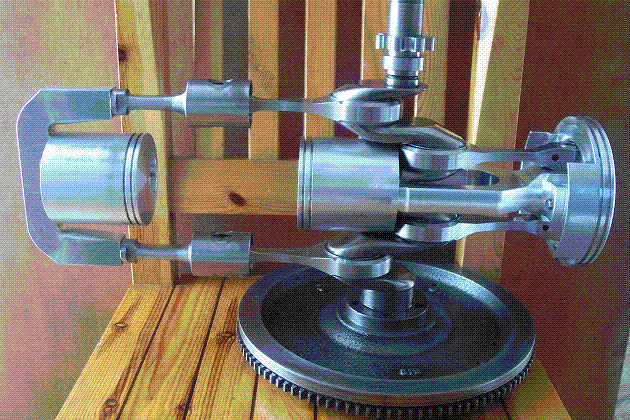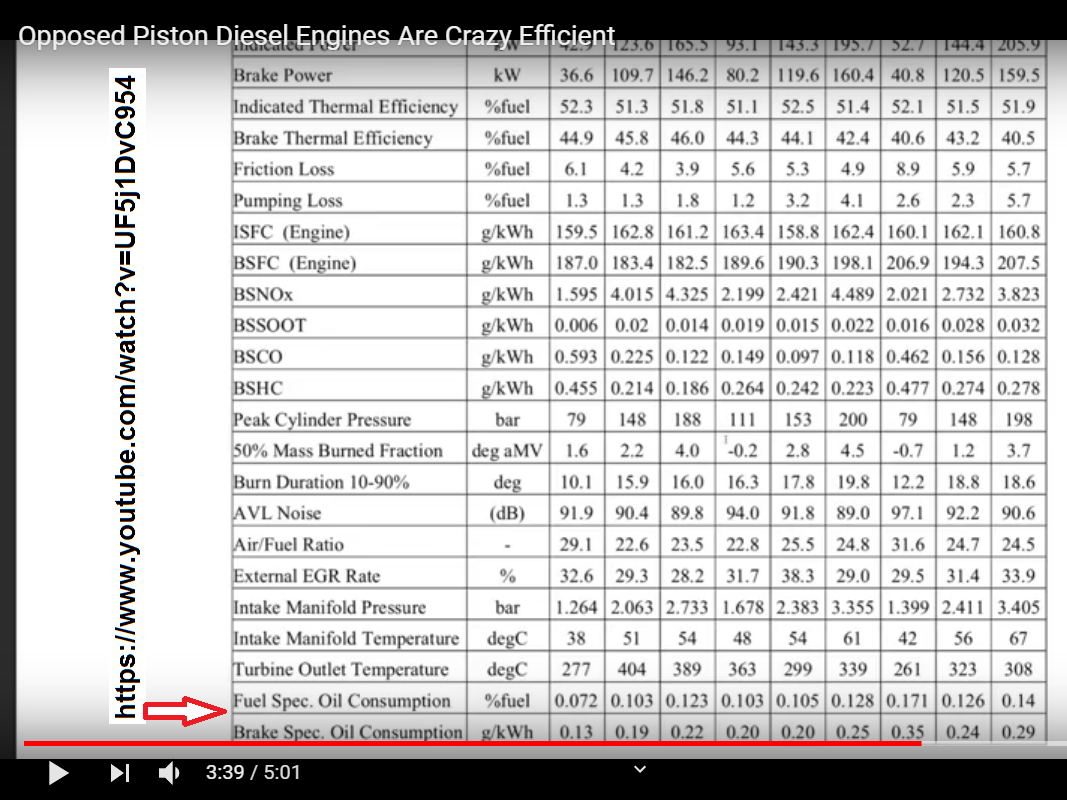Hello all.
Here is a slide from the Achates_Power Opposed Piston youtube video (posted a few posts ago by Big Tea):

A is the exhaust port.
B is the piston skirt.
C is the piston pin.
The piston skirt B abutting / sliding on the cylinder liner (not shown) transmits a thrust force F from the piston to the casing (the inclination of the connecting rod causes this thrust load F); F times the eccentricity of the piston pin from the crankshaft rotation axis makes the instant torque provided by the engine (more correctly: by the specific cylinder of the engine).
To take the heavy thrust loads without wear, it is necessary a thick oil film between the piston skirt and the cylinder liner, no matter where the oil rings (if any) are located.
The piston rings need a substantially thinner oil film on the cylinder liner to avoid scuffing.
So, you need adequate oil above the exhaust port A.
And this oil is scraped by the piston rings and passes over the “hot” open holes pof the exhaust port.
This simply says that you can’t avoid oil from escaping (total loss).
The same with the opposite piston that slides over the open intake (transfer) ports.
Unless they use some “smart” / magic oil that avoids falling into the open holes (i.e. the ports) of the cylinder, the specific oil consumption for this 2-stroke engine of Achates Power can’t be real / true.
The Junker Opposed Piston engines, the “famous” Ecomotors OPOC, the Detroit Diesels of GM had exactly the same problem.
Do I miss something?
As explained above, the trhust load is at the piston pin height.
What if the piston pin is shifted away from the ports?
This is what the OPRE:

and the PatOP:

opposed piston engines do (spot on the piston pins).
The OPRE and PatOP opposed piston engines use “crosshead” architecture that, without increasing the engine length, passes the thrust loads away from the ports, at the cool side of the cylinder.
At the surface of the cylinder where the port openings (holes) are, the OPRE and PatOP need only a thin oil film to protect the piston rings from scuffing.
This allows a “4-stroke-like” lubrication and lowers the specific oil consumption.
Thanks
Manolis Pattakos




